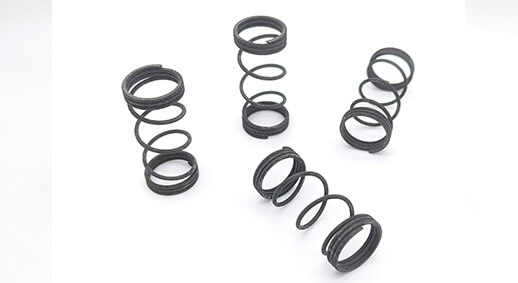Compression spring stainless steel is a popular choice for a wide variety of applications due to its unique combination of strength, corrosion resistance, and versatility. This comprehensive guide will delve into the intricate world of compression spring stainless, exploring its applications, benefits, selection criteria, and maintenance, empowering you to make informed decisions for your specific needs.
Understanding Compression Springs
Compression springs are helical springs that resist linear compression, storing mechanical energy when compressed. They are designed to push back against the applied force, returning to their original shape when the force is removed. Their versatility stems from their simple yet effective design, making them indispensable in various industries.

Why Choose Stainless Steel for Compression Springs?
Stainless steel is celebrated for its excellent corrosion resistance, owing to the presence of chromium in its composition. This inherent resistance to rust and other forms of corrosion makes stainless steel compression springs highly durable and suitable for demanding environments. Moreover, stainless steel exhibits remarkable strength, enabling these springs to withstand high loads and repeated cycling without compromising performance.
Advantages of Compression Spring Stainless
Let's delve into the specific advantages that make compression spring stainless a preferred choice:
- Exceptional Corrosion Resistance: This is arguably the most significant advantage, making them suitable for humid environments, chemical processing, and marine applications.
- High Strength and Durability: Stainless steel's inherent strength allows these springs to withstand substantial loads, ensuring long-lasting performance even under demanding conditions.
- Temperature Resistance: Certain grades of stainless steel exhibit excellent resistance to both high and low temperatures, broadening their applicability in challenging environments.
- Hygiene and Cleanliness: The smooth, non-porous surface of stainless steel prevents the accumulation of dirt and bacteria, making them ideal for food processing, medical devices, and pharmaceutical applications.
- Aesthetic Appeal: Stainless steel's inherent shine and modern look can enhance the aesthetic value of products, particularly in consumer-facing applications.
Applications of Compression Spring Stainless
The versatility of compression spring stainless is reflected in its wide range of applications across various industries. Let's explore some key examples:
- Automotive Industry: From suspension systems to valve mechanisms, compression spring stainless plays a crucial role in ensuring smooth vehicle operation.
- Aerospace Industry: The high strength-to-weight ratio and temperature resistance of stainless steel make these springs suitable for demanding aerospace applications.
- Medical Devices: Their hygiene and biocompatibility make stainless steel compression springs invaluable in medical devices, including surgical instruments and implants.
- Electronics: Compression spring stainless finds applications in electronic components, providing reliable force and contact within intricate circuits.
- Industrial Machinery: From heavy-duty manufacturing equipment to precision instruments, these springs ensure accurate and reliable operation in diverse industrial settings.
Selecting the Right Compression Spring Stainless
Choosing the appropriate compression spring stainless for your specific application requires careful consideration of several factors:
- Load Requirements: Determine the maximum load the spring will need to withstand to ensure it can handle the applied force without permanent deformation.
- Spring Rate: This refers to the force required to compress the spring by a specific distance. Carefully calculate the required spring rate to ensure proper functionality.
- Corrosion Resistance: Assess the environmental conditions to select a stainless steel grade with adequate corrosion resistance, particularly in harsh or humid environments.
- Temperature Range: Consider the operating temperature range to ensure the chosen stainless steel grade can maintain its properties without degradation.
- Size and Dimensions: Determine the required spring diameter, length, and wire thickness based on the available space and functional requirements.
Maintenance and Care
While compression spring stainless offers exceptional durability, proper maintenance can further extend their lifespan:
- Regular Inspection: Periodically inspect the springs for any signs of wear, corrosion, or damage. Replace worn springs promptly to prevent malfunctions.
- Cleaning: Clean the springs using appropriate methods, such as ultrasonic cleaning or mild solvents, to remove dirt and debris that could accelerate wear.
- Lubrication: In certain applications, lubrication can reduce friction and wear, prolonging the spring's lifespan.
- Proper Storage: Store stainless steel springs in a clean, dry environment to prevent corrosion. Avoid contact with incompatible materials that could lead to galvanic corrosion.
Compression spring stainless steel stands as a testament to the remarkable properties of this versatile material. Its unique combination of strength, corrosion resistance, and versatility makes it an essential component in countless applications. By understanding the benefits, selection criteria, and maintenance practices outlined in this guide, you can harness the full potential of compression spring stainless to meet your specific needs and ensure long-lasting, reliable performance in diverse environments.


